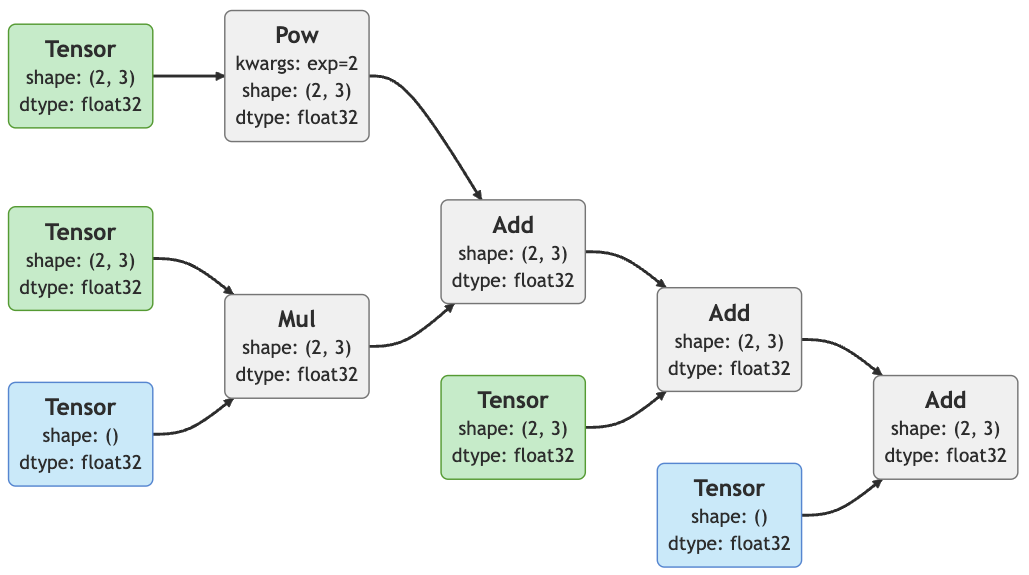Daniel Kofler
AutoCompyute
Lightweight Autograd Engine in Python
AutoCompyute is a deep learning library that provides automatic differentiation using only NumPy as the backend
for computation (CuPy can be used as a drop-in
replacement
for NumPy). It is designed for simplicity and
performance and enables you to train deep learning models with minimal dependencies while leveraging GPU
acceleration. The package supports:
- Tensor operations with gradient tracking.
- Neural network layers and loss functions.
- Performant computation for both CPU and GPU.
- A focus on clarity and simplicity.
Under the Hood
At its core, AutoCompyute features a Tensor object for storing data and gradients, and
Op objects for defining
differentiable operations.
The Tensor object is the fundamental data structure in this autograd engine. It holds
numerical data as a NumPy array and remembers, how it was created by keeping a reference to the Op
that created it.It's most important attributes are:
data: A NumPy array containing the numerical values.grad: A NumPy array holding the computed gradients (initialized as None, filled by
calling Tensor.backward()).ctx: Stores a reference to the operation (Op) that created this tensor.src: References the parent tensors involved in the creation of the tensor.
The Op object represents a differentiable operation applied to tensors. Each operation implements
both a forward and backward pass.
How the Engine Works
-
Computation Graph Construction: When an operation (e.g.,
Tensor.add) is called, an
Op
instance is created. It performs the forward computation while also caching intermediate values that are
required for the backward pass. The resulting output tensor maintains references to the Op and
parent tensors, forming a
computational graph.
- Backpropagation: Calling
backward() on the final tensor (e.g. a loss value)
initiates gradient
computation. The gradients propagate in reverse through the computational graph by calling
backward() on each Op, which distributes gradients to parent tensors.
- Gradient Storage: As the gradients are propagated, they are stored in the
grad
attribute of
each
Tensor, enabling later parameter updates for optimization.
 Computational graph construction in AutoCompyute
Computational graph construction in AutoCompyute